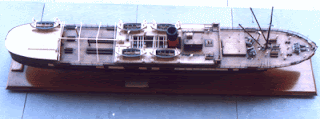Lost Railway Station of Rameswaram Road (Puthu Road). A Metre Gauge station.
In the annals of India’s railway history lie countless forgotten halts and abandoned alignments, but few are as poignant as the tale of the lost station of Rameswaram Road, otherwise called Puthu Road. Once a modest node on the fabled Indo–Ceylon route, this station bore silent witness to the intertwining destinies of South India and Ceylon (present-day Sri Lanka), until nature’s fury and political upheavals consigned it to oblivion.
A Journey into the Past
My own acquaintance with this vestige occurred during a recent visit to Pamban Island. Though I had traversed these shores before, it was only on this occasion that I embarked upon a deliberate quest to trace the erstwhile metre-gauge line that once ran from Pamban Junction to Dhanushkodi Pier. Beyond this terminus, the voyage continued not on rails but by steamer across the Palk Strait to Thalaimannar in Ceylon, and thence by rail again to Colombo and other colonial towns.
This seamless intermodal journey — train, steamer, train again — embodied the very idea of connected civilisations. It was not merely transport but a bridge of culture, commerce, and kinship.
The Demise of the Indo–Ceylon Ferry
Alas, the Indo–Ceylon ferry service, already weakened by the cataclysmic cyclone of 1964, finally met its demise in 1984, following assaults by the Liberation Tigers of Tamil Eelam (LTTE). In the post-1964 interregnum, the service had shifted to Rameswaram’s fishing harbour, yet the romance of the old alignment was never recaptured.
Encounter with a Vanished Station
En route to Kodandaramar Temple near Mukundarayar Chathiram, my auto-rickshaw driver — a veritable oral historian in his own right — revealed to me the ghostly remains of this lost station. Local lore identifies it as Rameswaram Road or Puthu Road, an outpost that once bore the bustle of pilgrims and traders alike. Today, little survives but the pedestal of a solitary water tank, a mute sentinel of what was washed away on 26 December 1964 by the infamous cyclone.
This station had served not only Rameswaram town but also travellers who sought an alternative to the principal Rameswaram station. Its alignment cut diagonally towards Pamban Junction, a modest geometry of steel that once connected two worlds.
The Cyclone Tragedy of 1964
The tragedy of 22 December 1964 is writ large in the memory of India’s railways. At precisely 23:55 hours, train no. 653 — the Pamban Junction–Dhanushkodi Passenger — carrying 110 passengers and five railway staff, was engulfed by the fury of storm and surge while entering Dhanushkodi station. In a matter of minutes, all 115 souls perished, swept away by tidal waves of apocalyptic force. Sic transit gloria mundi — thus passes the glory of the world.
The Highway that Replaced the Rails
By 1990, whatever vestiges of the metre-gauge line still lingered were uprooted. The alignment metamorphosed into a two-lane artery of the modern republic: National Highway 55 (formerly NH 49). Motorcars now speed over what was once the passage of the Indo–Ceylon Express, blithely unaware of the ghosts that haunt their tarmac.
Location of the station shown in map :
The Steamer Connection: S.S. Irwin
Integral to this Indo–Ceylon link was the steamer S.S. Irwin, the stalwart vessel that plied between Dhanushkodi and Thalaimannar. Built in 1929 and commissioned in 1930, she measured 259 feet in length and 38 feet across the beam, with a tonnage of 970.11 gross and 377.39 registered. Her capacity, inclement weather, was an impressive 1,552 passengers, reduced to 1,045 in turbulent seas. Cruising at approximately 10 knots, she was not merely a ship but a floating bridge between two nations.
The very name “Boat Mail” evokes nostalgia: a train from Madras (now Chennai) connecting seamlessly with a steamer to Ceylon, an imperial choreography of rail and sail.
S S Irwin model:
Lost railway line :
The British Military Stamp
Among the archaeological remains are iron sleepers stamped with the abbreviation M&SMB, believed to signify the Material and Systems Management Branch of the British Indian Army. Such insignia hint that this line was not only civil infrastructure but also carried strategic import, binding together the colonial territories in times of war and peace.
Epilogue: The Vanishing of Memory
Today, nothing remains of Puthu Road station save the echoes of recollection. Once scattered relics whispered of a railway that stitched together India and Ceylon, of a community obliterated by cyclone, and of a maritime corridor since supplanted by the prosaic highway. Yet even those vestiges, which lingered for decades to tantalise the railway antiquarian, were erased by 2023. The last iron sleepers, embankments, and tell-tale remnants were swept aside in the name of progress and road expansion.
What endures now is not masonry nor metal, but memoria alone — oral traditions, fading photographs, and the imagination of those who cherish India’s railway past. In contemplating this forgotten station, one confronts the memento mori of human endeavour: that all our grandest infrastructures, like the very empires that built them, are but transient.
Thus, the tale of Rameswaram Road (Puthu Road) is no mere footnote; it is a chapter in the palimpsest of history, awaiting rediscovery by each pilgrim who dares to listen, even when the land itself has effaced its traces.
Original blog first published: December 2015.
Photographs and archival data: All rights reserved. Please seek prior permission before reproduction or use.
#IndianRailways #MetreGauge #LostStations #BoatMail #RailwayHistory #MaritimeHeritage
#Rameswaram #Pamban #Dhanushkodi #PalkStrait #TamilNadu #SriLanka
#ColonialHistory #JamesRennell #BritishIndia #IndoCeylonLink #ForgottenHistory
#TravelBlog #HiddenHistory #LostPlaces #Cyclone1964 #SouthIndia





























